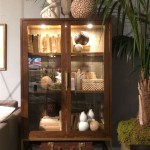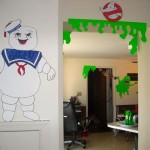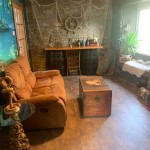Science Lab Room Decor: Fostering Inspiration and Safety
Effective science lab decor goes beyond mere aesthetics; it plays a crucial role in fostering a productive and safe learning environment. Thoughtful design choices can inspire curiosity, enhance understanding, and reinforce essential safety protocols. This article explores key considerations and practical ideas for creating a stimulating and secure science lab space.
Functionality should be the primary driver in designing a science lab's decor. Work surfaces must be durable and resistant to chemicals and heat. Adequate storage solutions, including cabinets, drawers, and shelving, are essential for organizing equipment and supplies. Clear labeling systems facilitate easy identification and retrieval of materials. Furthermore, strategically placed safety equipment, such as fire extinguishers, eyewash stations, and safety showers, must be readily accessible and clearly marked.
Lighting plays a significant role in both the functionality and ambiance of a science lab. Ample natural light is desirable, supplemented by strategically positioned artificial lighting to eliminate shadows and ensure optimal visibility during experiments. Task lighting at individual workstations can further enhance precision and safety. Consider using adjustable lighting fixtures to accommodate various experimental setups.
Visual aids can transform a science lab from a sterile workspace into an engaging learning environment. Posters showcasing scientific concepts, diagrams illustrating experimental procedures, and charts displaying essential information can reinforce learning and stimulate curiosity. Models of scientific instruments, anatomical structures, or molecular arrangements can provide three-dimensional representations that enhance understanding. Furthermore, incorporating inspirational quotes from prominent scientists can motivate students and foster a sense of scientific inquiry.
Color schemes significantly impact the atmosphere of a science lab. While bright, stimulating colors can create a vibrant learning environment, it is important to consider the psychological effects of different colors. Cool colors like blue and green can promote calmness and focus, while warm colors like yellow and orange can stimulate creativity and energy. Neutral tones like gray and white can create a clean and professional backdrop, allowing visual aids and experimental setups to stand out. A balanced approach, incorporating both stimulating and calming colors, can optimize the learning environment.
Incorporating elements of nature can bring a sense of tranquility and inspiration to a science lab. Potted plants can improve air quality and add a touch of life to the sterile environment. Images of natural landscapes or scientific phenomena can inspire awe and wonder. Even small touches, such as a display of rocks or minerals, can connect students to the natural world and foster a deeper appreciation for scientific inquiry.
Safety should be paramount in any science lab. Clear and concise safety posters outlining essential procedures, such as proper handling of chemicals and equipment, are crucial. Color-coded labels and signage can reinforce safety protocols and facilitate quick identification of hazards. Designated areas for storing hazardous materials, clearly marked with appropriate warning symbols, are vital for maintaining a safe working environment.
Technology integration can significantly enhance the functionality and engagement of a science lab. Interactive whiteboards can facilitate collaborative learning and dynamic presentations. Digital microscopes and data loggers can provide students with hands-on experience with modern scientific tools. Access to online resources and simulations can expand learning opportunities and provide access to a wealth of scientific information.
Promoting organization and cleanliness is essential for maintaining a safe and productive science lab. Clearly defined work areas, designated storage spaces, and regular cleaning schedules can prevent clutter and minimize the risk of accidents. Encouraging students to take responsibility for maintaining a tidy workspace fosters a sense of ownership and promotes good laboratory practices.
Sustainability should be a key consideration in science lab decor. Choosing eco-friendly materials for furniture and fixtures, promoting recycling and waste reduction practices, and incorporating energy-efficient lighting can minimize the environmental impact of the lab. Educating students about sustainable practices can foster environmental awareness and responsibility.
Creating an inspiring and safe science lab environment requires careful planning and attention to detail. By prioritizing functionality, safety, and visual appeal, educators can transform the lab into a dynamic space that fosters curiosity, encourages exploration, and promotes a deeper understanding of the scientific world.

Story Laboratory Science Themed Library Decor Lab Decorations Themes

7 Awesome Science Lab Decoration Ideas On A Budget The Animated Teacher

62 Best Science Lab Decorations Ideas Themes

7 Awesome Science Lab Decoration Ideas On A Budget The Animated Teacher

35 Best Time Lab Hallway Decorations S On Science Classroom Decor

Awesome Science Party Ideas Decor Activities Press Print

Awesome Science Party Ideas Decor Activities Press Print

21 Clever Science Classroom Decorating Ideas For Your Door

Result For Science Lab Vbs Decorating Ideas Decorations Decor Room

Truth For Teachers Classroom Photos Of Mr Dyre S High School Science Lab Decorations







